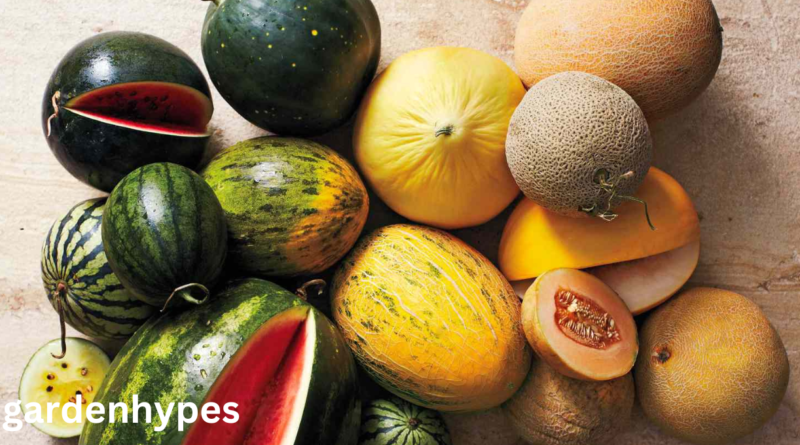Different Types of Melon Variety Their Unique Flavors
Introduction to Melons
Every summer has its trademark taste, and nothing captures it better than Melon Variety . Think about it: a hot afternoon, the sun blazing, your shirt sticking to your back, and someone hands you a slice of ice-cold watermelon. The very first bite is juicy, sweet, and watery enough to cool your whole body in seconds. That’s not just eating a fruit—it’s like drinking summer itself.
Melons aren’t newcomers to our tables. They’ve been around for thousands of years, with their roots stretching back to Africa and Asia. Ancient traders carried melon seeds across deserts and seas, letting the fruit spread far and wide. Over time, they made their way into the hands of farmers and markets across Europe, the Middle East, and eventually the Americas. Today, melons are universal. Walk through a busy Asian street market and you might see striped Korean melons. Wander into a French countryside stall and you’ll spot the aromatic Charentais. Head to a U.S. grocery store and you’ll find massive watermelons piled high, ready for summer barbecues.
click in link watermelon plant look like
What makes melons so special is that they don’t belong to just one “flavor group.” Some are crisp and watery, like cucumbers. Some are creamy and musky, almost like dessert. And a few, like the winter melon, aren’t even sweet—they’re used in soups and savory dishes. In a way, melons are like people: each one has its own personality.
They’re also part of the cucurbit family, which includes cucumbers, pumpkins, and squash. That explains why some melons have a cooling, cucumber-like crispness, while others lean more toward sweet and dense textures. It’s this variety that keeps us coming back. There isn’t just “a melon”—there are dozens, and each one tells a different story.
So, in this guide, we’ll explore the wide world of melons. From the famous watermelon and cantaloupe to lesser-known gems like the Santa Claus melon, you’ll get to know what makes each variety unique. We’ll also dive into their nutritional perks, how to pick the perfect ripe one, and a few fun ways to enjoy them beyond just slicing and eating.
What Makes Melons Special?
What sets melons apart from other fruits is the balance they strike. Citrus fruits like oranges and lemons are refreshing, but they’re sharp and tangy. Tropical fruits like mangoes and bananas are sweet and filling, but sometimes they feel heavy. Melons sit right in between. They hydrate you like cucumbers, satisfy your sweet tooth like dessert, and yet feel light enough that you can eat half a melon without regret.
They’re also incredibly versatile. Take watermelon, for example. You can slice it plain, blend it into juice, freeze it into popsicles, or toss it into a salad with feta cheese. Cantaloupe, with its creamy orange flesh, pairs beautifully with salty prosciutto, a combination adored in Italy. Honeydew slips easily into smoothies, cocktails, and fruit bowls. In Mexico, people often sprinkle watermelon or cantaloupe with chili powder and lime juice for a fiery, tangy kick. In Asia, melons sometimes even end up in savory stir-fries or pickled dishes.
Another thing melons have going for them is aroma. A ripe cantaloupe perfumes the air with its musky sweetness. A Charentais melon practically smells like a natural perfume counter. Unlike apples or pears, melons don’t hide their ripeness—they announce it boldly.
And then there’s hydration. With water content ranging from 85% to over 90%, melons act like nature’s own water bottles. They’re the kind of fruit that doesn’t just quench thirst but actually cools the body. This is why athletes, farmers, or anyone working under the sun can swear by a slice of melon as a quick recovery snack.
So yes, melons are special because they refresh, nourish, and delight all at once. They’re not just food—they’re a summer ritual.
Nutritional Value of Melons
The best part about melons? They taste indulgent but are secretly some of the healthiest fruits you can eat. They’re like that friend who looks fun and carefree but is quietly reliable in the background.
Let’s break it down:
- Low in calories – A cup of cubed cantaloupe or honeydew has fewer than 60 calories, yet it fills you up thanks to water and fiber.
- Vitamin C powerhouse – Boosts your immunity, helps your skin glow, and aids healing.
- Vitamin A (beta-carotene) – Vital for eyesight and skin health, especially in orange-fleshed melons like cantaloupe.
- Lycopene – Found in watermelon, this antioxidant has been linked to heart health and reduced risk of certain cancers.
- Potassium – Balances fluids, prevents muscle cramps, and keeps blood pressure in check.
- Fiber – Though mostly water, melons still give enough fiber to help with digestion and gut health.
Now here’s the kicker: melons are also excellent for hydration because they don’t just contain water; they also provide electrolytes. That makes them better than many store-bought sports drinks. Imagine cooling off with a slice of watermelon after a jog—refreshing, hydrating, and no artificial sugars.
This combination of hydration, vitamins, and minerals makes melons a quiet superfood. They may not get the hype that kale or blueberries do, but honestly, on a hot day, a chilled melon does more for your body than a so-called “superfood smoothie.”
click in link watermelon plant look like
Popular Melon Varieties Around the World
Melons aren’t a one-size-fits-all fruit. Each variety brings its own look, taste, and story. Here are some of the most loved ones:
Watermelon
The king of summer. Its red, sometimes golden flesh is crisp, juicy, and sweet. Watermelon comes in many forms: seeded, seedless, mini, and even square ones in Japan. Beyond taste, watermelon is a lycopene powerhouse, supporting heart health and reducing inflammation.
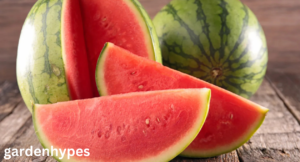
Cantaloupe (Muskmelon)
Recognizable by its netted, rough skin and orange, fragrant flesh. Unlike watermelon’s crunch, cantaloupe is creamy and musky. It’s rich in vitamins A and C and often enjoyed with yogurt, in smoothies, or just plain sliced.
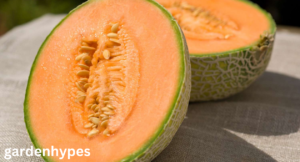
Honeydew Melon
The underrated cousin. Smooth pale skin, light green flesh, and a subtle sweetness. Honeydew has a cooling, almost minty effect, making it perfect for hot climates. It’s also low in calories and blends well into desserts and drinks.
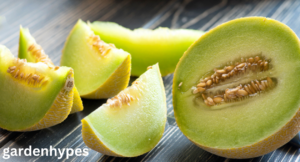
Galia Melon
A hybrid between cantaloupe and honeydew, Galia offers the best of both—aromatic, tropical sweetness with green flesh inside a netted yellow rind. First grown in Israel, it’s now popular worldwide.
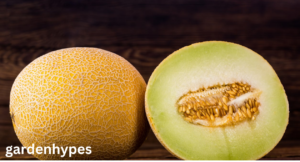
Canary Melon
Named for its bright yellow skin, this melon has pale, sweet-tart flesh inside. Its flavor is sharper than honeydew, making it great to pair with salty foods or cheeses. It’s especially popular in Europe and Asia.
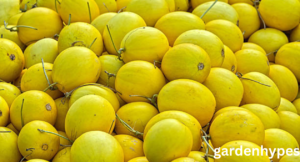
Exotic Melon Varieties You Might Not Know
Beyond the familiar favorites, there are some unique melons worth exploring:
Korean Melon
Small, oval, and bright yellow with white stripes. Its crisp, pear-like flesh is mild and refreshing. Bonus: its skin is edible, so it’s easy to snack on whole.
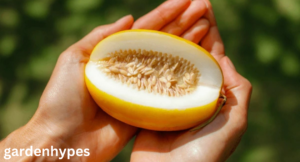
Santa Claus Melon (Piel de Sapo)
From Spain, nicknamed “Santa Claus” because it lasts until Christmas. Its mottled green rind hides sweet, pale flesh that tastes like honeydew but firmer.
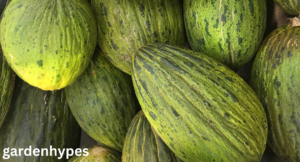
Charentais Melon
A French gourmet favorite. Small, round, intensely aromatic with deep orange flesh. Often enjoyed with prosciutto or as part of luxury platters.
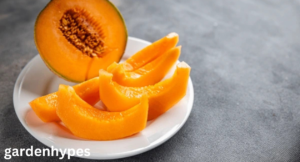
Winter Melon
Not sweet, but savory. Used in Chinese cooking for soups and stir-fries. Mild, cucumber-like flavor with cooling properties in traditional medicine.
click in link watermelon plant look like
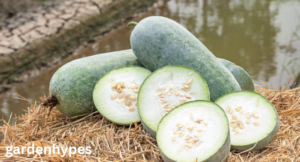
faqs
- Are melons good for weight loss?
Yes. Melons are low in calories, high in water, and provide fiber that helps you feel full. They make an excellent snack for people trying to lose weight without giving up sweetness. - Can people with diabetes eat melons?
In moderation, yes. Melons do contain natural sugars, but their high water content lowers the overall glycemic load. Watermelon, cantaloupe, and honeydew can be eaten in controlled portions as part of a balanced diet. Always consult your doctor if you have specific dietary concerns. - How do I know if a melon is ripe?
- Watermelon: Tap it—ripe ones sound hollow.
- Cantaloupe: Smell the stem end; it should have a sweet, musky aroma.
- Honeydew: Look for a creamy undertone on the rind and slight softness at the blossom end.
- Galia/Canary: Check for a fruity fragrance and slight give when pressed gently.
- What’s the best way to store melons?
Whole melons can be kept at room temperature until ripe. Once cut, store them in an airtight container in the refrigerator and consume within 3–4 days for maximum freshness. - Are melon seeds edible?
Yes. While most people discard them, melon seeds are safe to eat and can even be roasted like pumpkin seeds. They’re a good source of protein and healthy fats. - Which melon is the sweetest?
The sweetness can vary, but Charentais, Galia, and fully ripened cantaloupes are often considered among the sweetest melon varieties.
